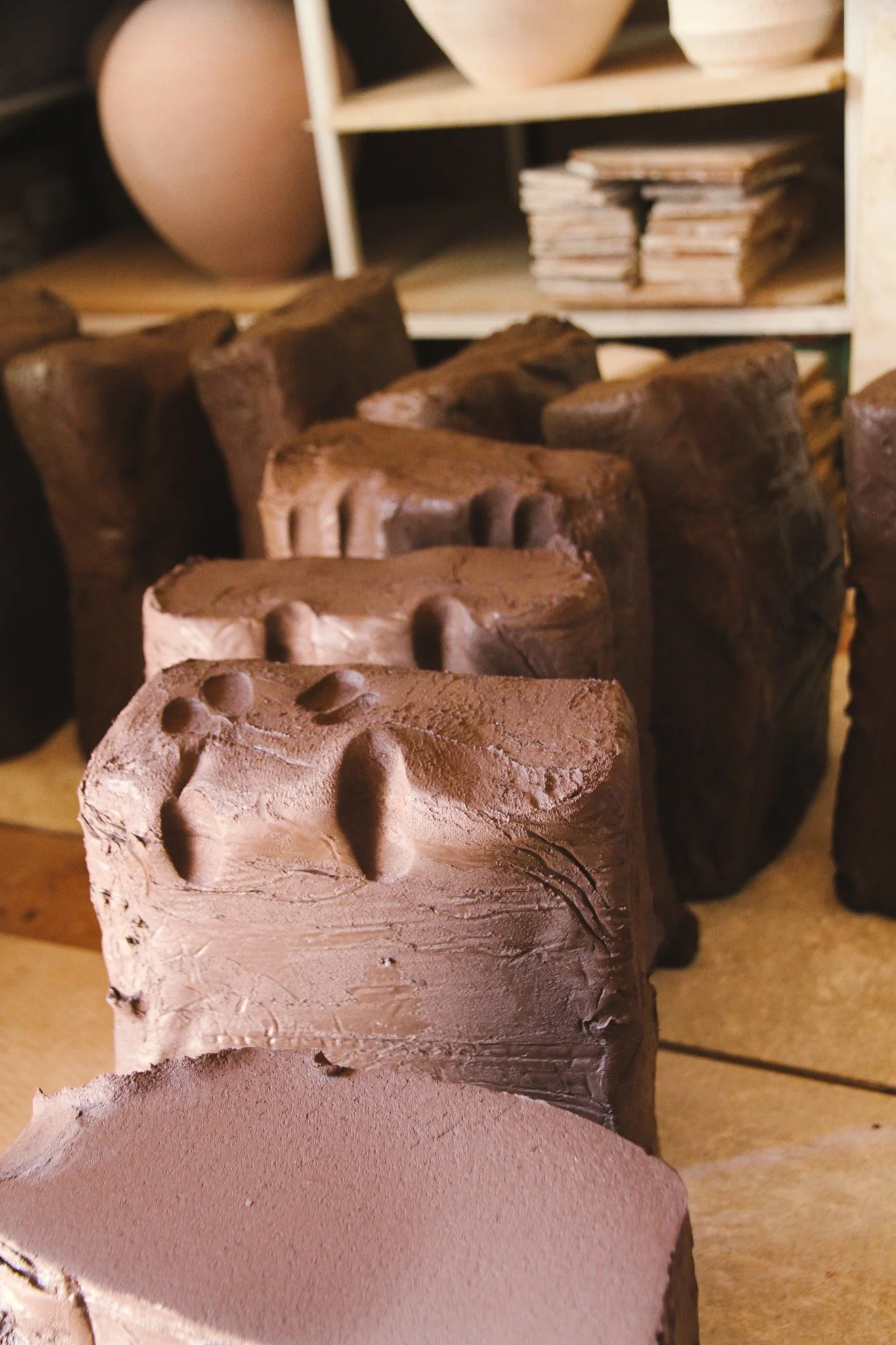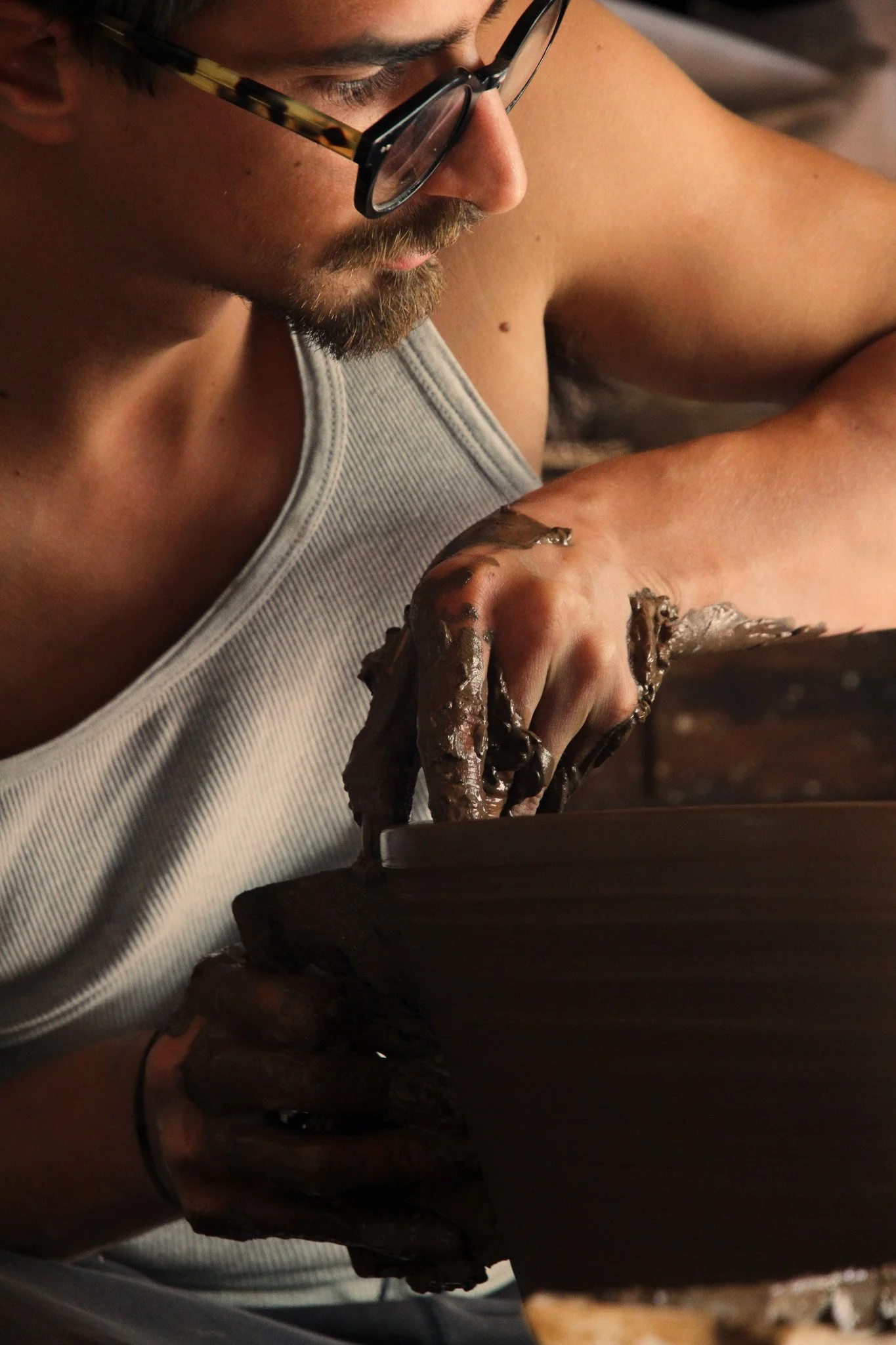Clay Crafting Techniques / TSV Collection and Artisan Ceramic Artistry
Clay is one of the most accessible and versatile materials used in crafting. From childhood play to therapeutic practices, clay connects us to the earth in a way few other materials can. But creating with clay, especially when shaping it into fine ceramics, is no simple task. It requires precision, creativity, and an understanding of the material's unique qualities.
At Utopia & Utility, we work with black earthenware clay to craft pieces for our TSV Collection. This low-firing clay starts off a chocolate brown and burns into a deep black, giving our pieces a distinctive, rich appearance. The addition of chamotte, a ground material from previously fired clay, adds both stability and a rough texture to the surface, offering an organic, tactile finish.
Crafting with Clay: The Process
Throwing on the Wheel:
Throwing is the art of shaping clay on a spinning wheel. Using the force of the spinning base, the clay mass is manipulated by touch until it forms a perfectly circular shape. For larger pieces, up to 10kg of clay is used, and the clay’s precision must account for shrinkage during the firing process. The final shape must be 10% larger when wet to achieve the desired size once fired.Precision in Shaping:
Our ceramic pieces demand precision at every stage of the crafting process. For example, bowls commissioned for our TSV Collection must have an accurately shaped lip to support the glasswork. The silhouette of the bowl must match the glass, requiring a careful balance of form and functionality.Profile Work:
A simple profile is used to connect various pieces of a Stacking Vessel. Ceramic is a perfect material for such designs due to its durability and ability to withstand weight. Shaping the profile with care ensures that the surface is smooth, preventing any damage to the glass when it rests upon the ceramic.
Challenges and Craftsmanship in Clay Work
Working with clay is both rewarding and challenging. The material is heavy, can dry out the skin, and stains everything it touches. It also has unique firing properties—heating it too quickly can cause cracking, and uneven heating leads to deformities. Moreover, glazes, which are powdered glass, are used to color and add luster to ceramic surfaces, requiring careful attention to detail to achieve the perfect finish.
At Utopia & Utility, our artisans have mastered the intricate process of throwing, shaping, and glazing to create pieces that combine functionality with beauty. Each step, from the initial shaping to the final firing, demonstrates a deep commitment to craftsmanship.
Precision Profile Work in Ceramic Stacking Vessels
A precisely shaped profile is essential for aligning and securing the components of a Stacking Vessel. Ceramic is the ideal material for this application due to its strength, durability, and ability to support substantial weight. The profile must be crafted to exact dimensions and finished to an ultra-smooth surface, ensuring a seamless fit and preventing scratches on the accompanying glass elements.
This level of attention to detail, combined with the ability to make the process appear effortless, is a testament to the true artistry and craftsmanship behind every Utopia & Utility piece.
Conclusion
Clay is not just a material—it is a living, breathing substance that evolves through the creative process. At Utopia & Utility, we celebrate the transformative journey of clay, shaping it into functional works of art. The TSV Collection exemplifies the harmony between craftsmanship and materiality, showcasing the full potential of clay, from its raw state to its final, refined form.



